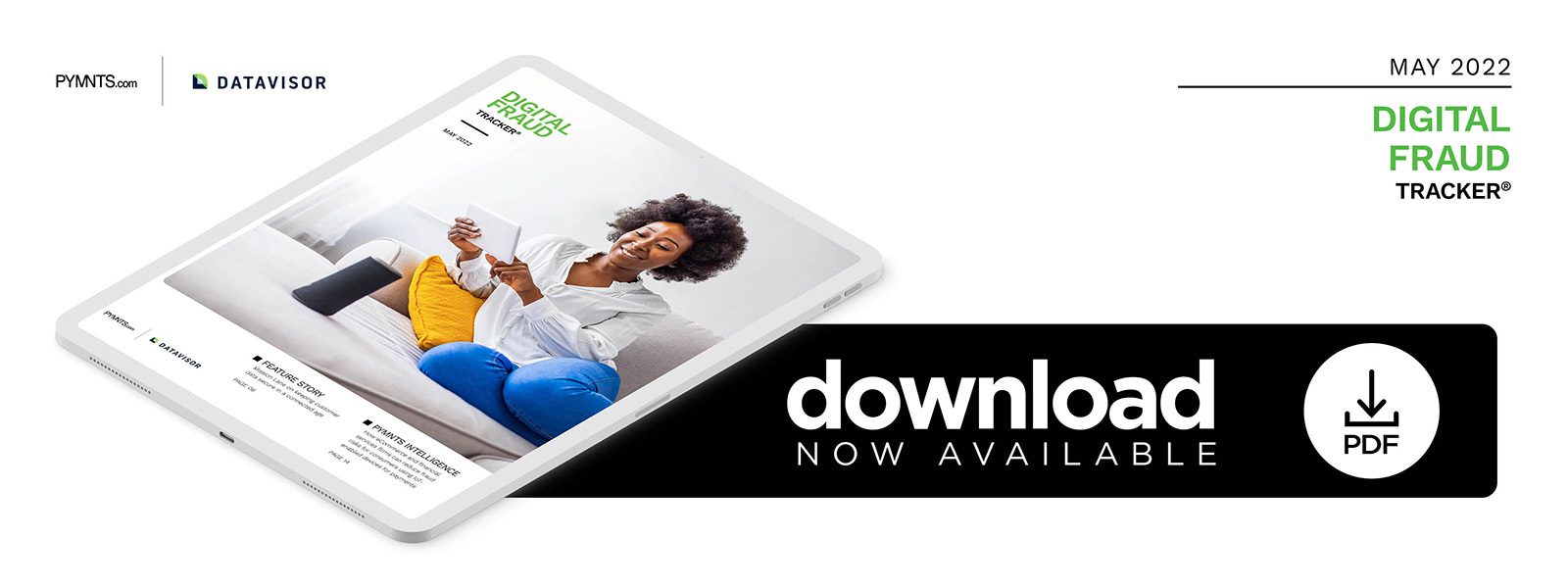PYMNTS Intelligence: Why Security Is Key to the Future of IoT-Enabled Devices for Banking and Payments

The shift to remote transactions during the pandemic not only accelerated the adoption of digital banking, but also firmly established the market for data exchange technologies and the devices connected to them, also known as the Internet of Things (IoT). The convergence of money and the IoT has created a world of opportunities for the financial services sector. Consumers are eager to try new technologies that allow them to transfer money or pay bills with a voice command or click of a button. Security is always a concern with financial transactions, however, and providers must always mitigate the risks involved when subtracting human interaction from the equation.
The use of IoT-enabled devices and artificial intelligence (AI) to help consumers save time on basic financial tasks continues to expand. The global market for the IoT in the banking and financial services sector was expected to grow by nearly $8 million from 2021 to 2026, representing a compound annual growth rate (CAGR) of 8%. North America will account for 34% of that increase, rising nearly 7% in 2022 alone.
AI-based chatbots and virtual assistants powered by services such as Alexa, Siri and Google Assistant will replace human tellers, but providers will need to invest in security processes and develop convenient interfaces to gain and keep consumers’ trust.
This month, PYMNTS Intelligence takes a close look at how payments and financial services are becoming more common on IoT-enabled devices, as well as consumers’ perceptions and feelings about using these devices for payments and account access. It also examines how providers are responding to these developments, both to mitigate potential fraud and to make consumers feel secure when using IoT-enabled devices for payments and account access.
Consumer Demand for the IoT Is Here to Stay
A March 2021 report found that the average United States household had 25 connected devices, including laptops, tablets, smartphones, smart TVs and other home devices, streaming or gaming devices and fitness trackers. This number was more than double that of 2019, and consumer use of connected technology grew by 50% within that time frame. Much of that growth owes itself to the pandemic, when consumers learned how to use these devices for virtual healthcare visits, remote working, fitness classes, streaming video services and, increasingly, shopping, paying bills and other financial tasks.
Nearly 40% of U.S. consumers say they will upgrade to newer models of their connected devices when these become available. A recent report also found that 57% of consumers in Germany, the United Kingdom and the U.S. already use voice assistants on devices in their hands, their cars and in smart speakers and other devices. As such, the pressure will be on manufacturers to develop devices that can handle everything from entertainment and communication to shopping and bill payment.
Consumers also need help navigating this technology, however, with 46% of U.S. consumers in 2021 saying they encountered difficulties with their connected products and could use assistance from manufacturers with troubleshooting and connecting their devices to the internet. Nearly one-third said they find the process overwhelming.
Securing the Future of the IoT
The IoT holds promise for use in payments and account access, but providers must work to ensure that transactions and personal financial data are secure. From a security perspective, the IoT can be viewed as a highway with many on-ramps, cars of differing ages or states of repair and operators of various skill levels. Hackers can find their way onto that highway through older devices lacking up-to-date encryption.
Users unfamiliar with scams and security risks can unknowingly introduce viruses and other online threats, and inconsistent standards make it difficult to mandate security safeguards on new devices. Mass assaults through botnet attacks can simultaneously affect thousands of workstations, jamming traffic on the IoT highway.
Providers must ensure the safety of the IoT, including through the use of security solutions that can act as “traffic cops.” Such solutions work by assigning each device a unique ID that never changes, utilizing machine learning (ML) to help detect advanced online threats, such as rooted or jailbroken devices, emulators, app cloners, repackaged apps, VPNs and botnets, and putting a stop to them. Manufacturers must also work with providers and governments to introduce new legislation, such as the European Union’s cybersecurity strategy adopted in October 2021, which will require standardized security features in all new connected devices.
The opportunities that connected devices promise are only becoming apparent as consumers realize the benefits of using machines to make their everyday financial lives easier. It is now incumbent on providers to gain consumer trust and make sure the journey is both safe and convenient for them.
